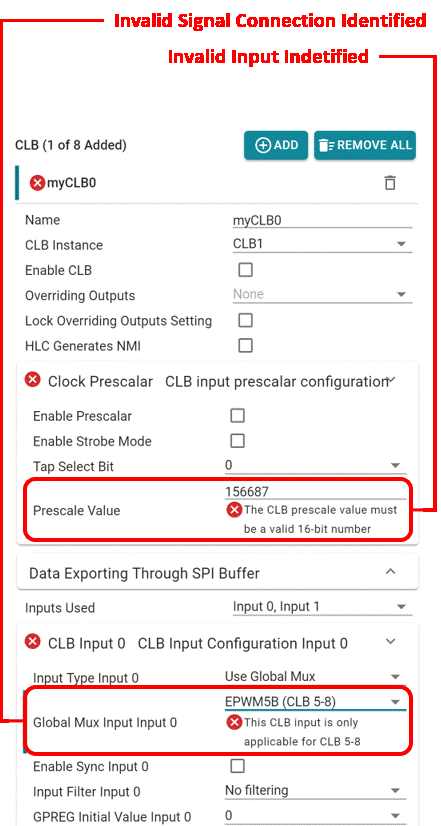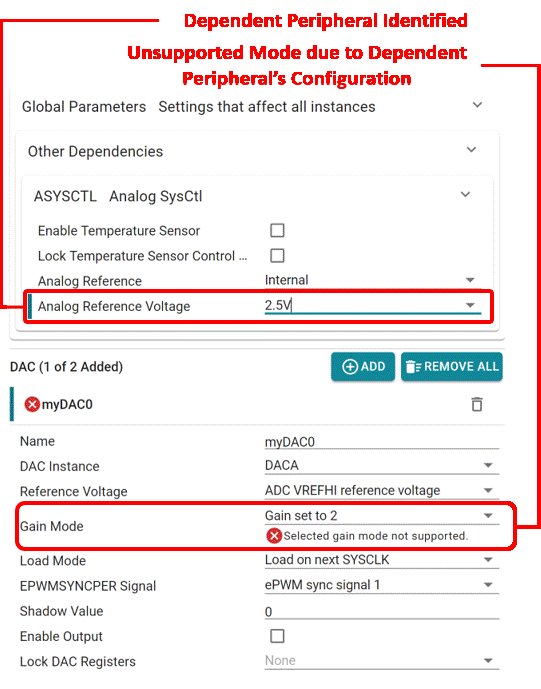SPRACX3 October 2021 TMS320F2800132 , TMS320F2800133 , TMS320F2800135 , TMS320F2800137 , TMS320F2800152-Q1 , TMS320F2800153-Q1 , TMS320F2800154-Q1 , TMS320F2800155 , TMS320F2800155-Q1 , TMS320F2800156-Q1 , TMS320F2800157 , TMS320F2800157-Q1 , TMS320F280021 , TMS320F280021-Q1 , TMS320F280023 , TMS320F280023-Q1 , TMS320F280023C , TMS320F280025 , TMS320F280025-Q1 , TMS320F280025C , TMS320F280025C-Q1 , TMS320F280033 , TMS320F280034 , TMS320F280034-Q1 , TMS320F280036-Q1 , TMS320F280036C-Q1 , TMS320F280037 , TMS320F280037-Q1 , TMS320F280037C , TMS320F280037C-Q1 , TMS320F280038-Q1 , TMS320F280038C-Q1 , TMS320F280039 , TMS320F280039-Q1 , TMS320F280039C , TMS320F280039C-Q1 , TMS320F280040-Q1 , TMS320F280040C-Q1 , TMS320F280041 , TMS320F280041-Q1 , TMS320F280041C , TMS320F280041C-Q1 , TMS320F280045 , TMS320F280048-Q1 , TMS320F280048C-Q1 , TMS320F280049 , TMS320F280049-Q1 , TMS320F280049C , TMS320F280049C-Q1 , TMS320F28075 , TMS320F28075-Q1 , TMS320F28076 , TMS320F28374D , TMS320F28374S , TMS320F28375D , TMS320F28375S , TMS320F28375S-Q1 , TMS320F28376D , TMS320F28376S , TMS320F28377D , TMS320F28377D-EP , TMS320F28377D-Q1 , TMS320F28377S , TMS320F28377S-Q1 , TMS320F28378D , TMS320F28378S , TMS320F28379D , TMS320F28379D-Q1 , TMS320F28379S , TMS320F28384D , TMS320F28384D-Q1 , TMS320F28384S , TMS320F28384S-Q1 , TMS320F28386D , TMS320F28386D-Q1 , TMS320F28386S , TMS320F28386S-Q1 , TMS320F28388D , TMS320F28388S , TMS320F28P550SJ , TMS320F28P559SJ-Q1 , TMS320F28P650DH , TMS320F28P650DK , TMS320F28P650SH , TMS320F28P650SK , TMS320F28P659DH-Q1 , TMS320F28P659DK-Q1 , TMS320F28P659SH-Q1
- Trademarks
- 1 Introduction
- 2 Getting Started With C2000 SysConfig
- 3 C2000 SysConfig Overview
- 4 SysConfig Generated Files After the Project is Built
- 5 Application Code Based on C2000 SysConfig Initialization
- 6 Interrupt Support
- 7 Device-Specific Code Generation
- 8 Adding C2000 SysConfig Support to Existing Projects
- 9 Remove C2000 SysConfig Support from Projects
- 10Standalone SysConfig Tool
- 11Summary
- 12References
3.5 Error Detection
One of the most important and useful features of the C2000 SysConfig is its ability to detect errors or missing requirements in your configuration.
Embedded devices often have many supported modes, but the device must be configured exactly as instructed by the technical documentation for each mode to operate correctly.
Also, the device silicon Errata documentation notes the unsupported modes that is sometimes missed. It is common that the development process for configuring a device is slowed down due to errors in the user's code. These errors could be due to mistakes in programming when transferring knowledge from the technical documentation into the application software. C2000 SysConfig is capable of catching configuration errors and notifying you of the incorrect setup.
Also similar to error generation, warnings are also generated as needed when a configuration is not necessarily wrong, but requires further attention.
 Figure 3-14 Error Detection
Figure 3-14 Error DetectionError detection in your configuration is NOT limited to one peripheral at a time. Incorrect setups can be detected across dependent modules. This ensures that all dependent peripherals are configured correctly.
 Figure 3-15 Dependent Module Error
Detection
Figure 3-15 Dependent Module Error
Detection